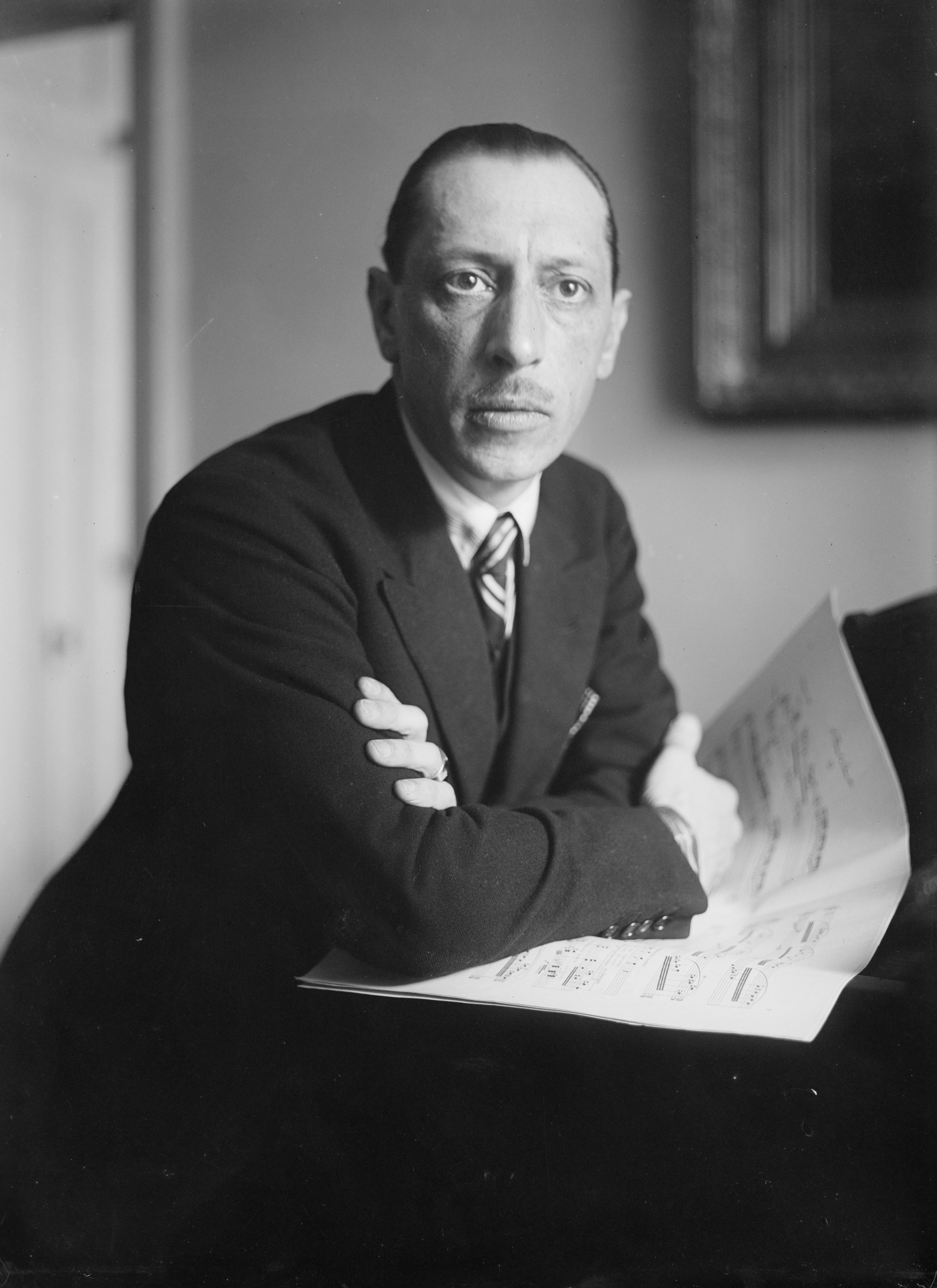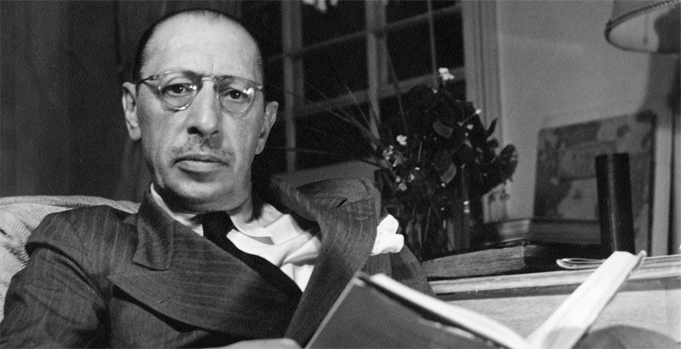Igor Stravinsky: A Biography
Introduction
Igor Fyodorovich Stravinsky (June 17, 1882 – April 6, 1971) was a Russian-born composer, conductor, and pianist who became a naturalized French citizen in 1934 and an American citizen in 1945. Widely regarded as one of the most significant and influential composers of the 20th century, Stravinsky’s work had a revolutionary impact on musical thought and sensibility, particularly before and after World War I. His career was marked by a remarkable stylistic evolution, moving through distinct periods that profoundly shaped modern music. His compositions, especially his early ballets, challenged traditional musical structures and introduced innovative rhythmic and harmonic concepts that continue to resonate in the classical music world.

Childhood
Igor Stravinsky was born in Oranienbaum (now Lomonosov), a resort town near St. Petersburg, Russia. His family had a strong musical and intellectual background. His father, Fyodor Ignatievich Stravinsky, was a renowned bass singer at the Imperial Mariinsky Theatre, and his mother, Anna Kirillovna Stravinskaya, was an accomplished pianist. Despite this rich artistic environment, Stravinsky’s parents initially discouraged his musical aspirations, pushing him towards a career in law. From an early age, Stravinsky received piano lessons and music theory instruction. He regularly attended performances at the Mariinsky Theatre, where his father often performed, exposing him to a wide range of Russian, Italian, and French opera. During family vacations in the countryside, he was also exposed to Russian peasant songs, which would later influence his early compositions. He attended the Second Saint Petersburg Gymnasium, though he reportedly disliked school and had few friends. His childhood was also marked by a somewhat strained relationship with his parents, particularly his short-tempered father and indifferent mother.
Youth
In 1901, Stravinsky enrolled at the University of Saint Petersburg to study law, a path his parents had chosen for him. However, his passion for music persisted. A pivotal moment in his youth came when he befriended Vladimir Rimsky-Korsakov, the son of the esteemed composer Nikolai Rimsky-Korsakov. Through this connection, Stravinsky was able to present his early compositions to the elder Rimsky-Korsakov. Recognizing Stravinsky’s talent, Nikolai Rimsky-Korsakov agreed to take him on as a private pupil in 1902, advising him against formal conservatory training due to its rigid environment. Rimsky-Korsakov became a crucial mentor, guiding Stravinsky in orchestration and composition until his death in 1908. During this period, Stravinsky composed several student works, including a Piano Sonata in F-sharp minor and the Symphony in E-flat. In 1905, he became engaged to his first cousin, Yekaterina Nosenko, whom he had known since childhood. Their marriage in 1906, though technically forbidden for first cousins, was facilitated by a sympathetic priest. They had two children, Théodore and Ludmila, during this period. The death of his father in 1902 granted Stravinsky financial independence, allowing him greater freedom to pursue his musical vocation.
Adulthood
Stravinsky’s adulthood was characterized by significant artistic evolution, international recognition, and personal changes. His collaboration with the impresario Sergei Diaghilev and the Ballets Russes marked a turning point in his career. Diaghilev, impressed by Stravinsky’s early orchestral works like Scherzo fantastique and Feu d’artifice, commissioned him to compose for his ballet company. This led to the creation of his groundbreaking ballets: The Firebird (1910), Petrushka (1911), and The Rite of Spring (1913). The premiere of The Rite of Spring famously caused a near-riot in Paris due to its revolutionary music and choreography, solidifying Stravinsky’s reputation as an avant-garde composer.
The outbreak of World War I in 1914 forced Stravinsky and his family to relocate to Switzerland, where they remained for the duration of the war. The Russian Revolution of 1917 further severed his ties with his homeland, as he lost his property in Russia. During this period, his music began to shift towards a more restrained and austere style, incorporating Russian folk idioms and elements of jazz, as seen in works like Renard (1916) and L’Histoire du soldat (1918).
In 1920, Stravinsky moved his family to France, where he would reside until 1939, becoming a French citizen in 1934. This marked the beginning of his Neoclassical period, where he drew inspiration from earlier European musical styles, reinterpreting them with his unique rhythmic and harmonic language. Works from this period include the Octet for Wind Instruments (1923), Concerto for Piano and Wind Instruments (1924), and the opera-oratorio Oedipus Rex (1927). During this time, he also began a career as a concert pianist and conductor to support his family, as his Russian assets were lost.
A significant personal development occurred in 1926 when Stravinsky underwent a religious conversion, which influenced sacred works like the Symphony of Psalms (1930). The late 1930s brought immense personal tragedy: his eldest daughter, wife, and mother all died from tuberculosis in quick succession in 1938 and 1939. In 1940, he married Vera de Bosset, whom he had known for many years.
With the onset of World War II, Stravinsky moved to the United States in 1939, initially to deliver lectures at Harvard University. He and Vera settled permanently in Hollywood, California, becoming U.S. citizens in 1945. In America, he continued to compose, producing works like the Symphony in C (1938–40) and Symphony in Three Movements (1942–45). His only full-length opera, The Rake’s Progress (1951), a Neoclassical work, premiered during this time.
In his later years, Stravinsky embraced serialism, a compositional technique he had previously resisted. This shift was influenced by his associate Robert Craft, who helped him explore this new direction. Works from his serial period include Canticum Sacrum (1955) and Threni (1958). Despite declining health, he continued to compose and conduct, undertaking international tours, including a notable return to Russia in 1962 after nearly five decades.
Major Compositions
Stravinsky’s compositional output is typically divided into three main periods, each marked by distinct stylistic characteristics:
Russian Period (c. 1907–1919): This early period is characterized by a strong influence of Russian folklore, mythology, and musical traditions. His works from this era are known for their vibrant orchestration, innovative rhythmic complexity, and often dissonant harmonies. Key works include:
•The Firebird (1910): This ballet, commissioned by Sergei Diaghilev for the Ballets Russes, brought Stravinsky international fame. It showcases his mastery of orchestration and his ability to create vivid musical narratives, blending lush Romanticism with exotic, Russian-inspired themes.
•Petrushka (1911): Another ballet for Diaghilev, Petrushka tells the story of three puppets brought to life. It features complex polyrhythms and bitonality, capturing the bustling atmosphere of a Russian fair. Its innovative use of folk melodies and percussive effects further cemented Stravinsky’s reputation.
•The Rite of Spring (1913): This ballet is arguably Stravinsky’s most revolutionary and influential work. Its premiere caused a scandal due to its audacious rhythms, dissonant harmonies, and primal, pagan themes. The Rite of Spring fundamentally altered the course of 20th-century music, emphasizing rhythm and percussive sounds over traditional melody and harmony.
•Renard (1916): A burlesque in one act, based on Russian folk tales, demonstrating his continued exploration of Russian idioms with a more restrained instrumentation.
•L’Histoire du soldat (The Soldier’s Tale) (1918): A theatrical work designed for a small ensemble, incorporating elements of ragtime, tango, and other popular dance forms, reflecting his wartime constraints and interest in new musical idioms.
Neoclassical Period (c. 1920–1951): Following the Russian Revolution and World War I, Stravinsky adopted a Neoclassical style, characterized by a return to formal clarity, balance, and objectivity, often drawing inspiration from 18th-century music. He reinterpreted classical forms and techniques with his distinctive modern sensibility. Notable works include:
•Pulcinella (1920): This ballet, based on music attributed to Giovanni Battista Pergolesi and other 18th-century composers, marked Stravinsky’s definitive turn towards Neoclassicism. He re-orchestrated and re-harmonized the earlier music, infusing it with his own rhythmic vitality.
•Octet for Wind Instruments (1923): A seminal work of the Neoclassical period, showcasing Stravinsky’s interest in chamber music and his precise, transparent scoring for winds.
•Oedipus Rex (1927): An opera-oratorio with a Latin libretto, this work exemplifies his Neoclassical approach to dramatic and sacred music, featuring monumental choruses and a detached, ritualistic quality.
•Apollon musagète (1928): A
ballet for George Balanchine, characterized by its serene and elegant classical style, a stark contrast to the percussive intensity of his earlier ballets.
•Symphony of Psalms (1930): A choral symphony for chorus and orchestra, this sacred work reflects Stravinsky’s renewed interest in religious themes and his unique blend of archaic and modern elements.
•Symphony in C (1938–40): Composed during his transition to the United States, this symphony is a significant work of his Neoclassical period, demonstrating his mastery of traditional symphonic form with his distinctive rhythmic and harmonic language.
•The Rake’s Progress (1951): Stravinsky’s only full-length opera, this Neoclassical work is a witty and refined pastiche of 18th-century opera, showcasing his ability to adapt historical styles while maintaining his unique voice.
Serial Period (c. 1954–1968): In his later years, Stravinsky surprisingly embraced serialism (also known as twelve-tone technique), a compositional method developed by Arnold Schoenberg, which he had previously avoided. His adoption of this technique, influenced by his collaboration with Robert Craft, led to a new phase of creative exploration. Works from this period are often more concise and dense, with a brittle, crystalline quality. Key works include:
•In Memoriam Dylan Thomas (1954): One of his first fully serial compositions, a vocal work that marked his embrace of the twelve-tone technique.
•Canticum Sacrum (1955): A choral work that integrates serial techniques with his earlier sacred style, demonstrating his innovative approach to the new method.
•Threni (1958): A setting of the biblical Lamentations of Jeremiah, this work applies strict twelve-tone methods to chant-like material, connecting his serial explorations with his Russian Orthodox roots.
•Movements for piano and orchestra (1959): A refined example of his serial technique, characterized by its density and economy.
•Requiem Canticles (1966): His last major work, a profoundly moving and concise piece that adapts modern serial techniques to a personal vision rooted in his Russian past, serving as a powerful testament to his enduring creative vitality.
Death
Igor Stravinsky continued to compose and conduct well into his eighties, despite a period of declining health, including a stroke in 1956. His last major work, Requiem Canticles, was completed in 1966. On April 6, 1971, Stravinsky died at the age of 88 in his Manhattan apartment in New York City, due to pulmonary edema. His death, though not entirely unexpected given his age and health, marked the end of an era in classical music. He was buried in the San Michele cemetery in Venice, Italy, near the grave of his long-time collaborator, Sergei Diaghilev. His passing was widely mourned by the musical world, and tributes poured in from across the globe, recognizing his immense contributions and revolutionary impact on 20th-century music.
Conclusion
Igor Stravinsky’s legacy is one of unparalleled innovation and stylistic versatility. From the groundbreaking rhythmic vitality of his Russian ballets to the formal clarity of his Neoclassical works and the intellectual rigor of his serial compositions, Stravinsky consistently pushed the boundaries of musical expression. He challenged established norms, redefined the role of rhythm and harmony, and influenced countless composers across generations. His ability to reinvent himself while maintaining a distinctive artistic voice ensured his enduring relevance throughout the 20th century and beyond. Stravinsky’s impact extends beyond his compositions; his writings, conducting, and public persona further cemented his status as a towering figure in music history. He remains a testament to the power of artistic evolution and a perpetual source of inspiration for musicians and audiences worldwide, his music continuing to captivate and provoke with its timeless originality and profound depth.

Comments are closed